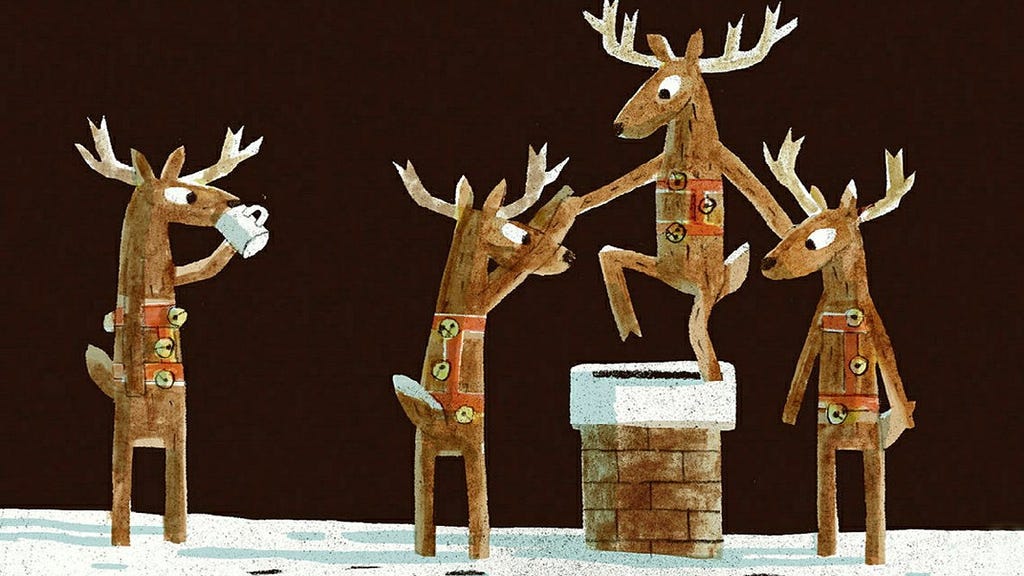Paragraph 1: Introduction to the Enigmatic Entry of Santa Claus
The age-old question of how Santa Claus enters homes, typically answered with the chimney descent, is playfully deconstructed in Mac Barnett and Jon Klassen’s picture book, "Hur kommer Tomten in i huset?" (How Does Santa Get into the House?). The chimney theory, with its inherent logistical limitations, particularly for houses lacking fireplaces, prompts a series of imaginative possibilities, mirroring a child’s fantastical musings about Santa’s nocturnal journey. The book’s central theme revolves around these playful speculations, creating a whimsical exploration of the holiday magic.
Paragraph 2: Shapeshifting Santa and the Patient Reindeer
Barnett and Klassen introduce the concept of a shapeshifting Santa, envisioning him transforming into a mouse, stretching like caramel, flowing through kitchen faucets, or folding himself into a letter delivered by a reindeer. This imaginative narrative caters to a child’s wonder while subtly injecting humor for adult readers. The reindeer, patiently awaiting Santa’s completion of each house visit, are depicted with a touch of mundane realism, sipping coffee and exuding an air of routine rather than fairytale enchantment. They are not merely transport, but integral partners in the logistical undertaking of Christmas Eve, highlighting the teamwork behind the holiday magic.
Paragraph 3: Klassen’s Artistic Evolution and the Warm Glow of Anticipation
Jon Klassen’s illustrations, a consistent highlight of his collaborations with Barnett, take a slightly different form in this book. A softer touch pervades the artwork, with looser contours and a warm, diffused light emanating from within the sleeping houses. This warm glow captures the essence of Christmas Eve anticipation, suggesting an inherent longing symbolized by softly lit lanterns. Klassen’s artistic evolution is evident in the departure from his previously more stylized approach, embracing a gentler aesthetic that complements the book’s contemplative tone.
Paragraph 4: A Comparative Analysis and the Narrative Structure
While "Hur kommer Tomten in i huset?" offers heartwarming imagery and playful speculation, it lacks the sharp narrative structure and surprising twists that characterized Barnett and Klassen’s previous works, particularly "De tre bockarna Bruse" (The Three Billy Goats Gruff). The book’s narrative progression doesn’t possess the same elegant, unexpected turns and lacks a similar level of innovative storytelling. This could be attributed to a potential saturation of Christmas-themed narratives or the nature of the project as a commissioned work rather than a purely passion-driven endeavor.
Paragraph 5: The Shadow of Previous Success and a Touch of Repetition
The book undeniably sits in the shadow of Barnett and Klassen’s previous achievements. Their prior collaborations set a high bar for innovation and narrative finesse, making "Hur kommer Tomten in i huset?" feel slightly less impactful in comparison. While it remains a pleasant read, it doesn’t fully capitalize on the duo’s potential for pushing creative boundaries. The sense of a reimagining of a classic tale in a new costume is present, but without the full extent of imaginative exploration one might expect from these creators.
Paragraph 6: Finding Charm in the Mundane and the Reimagining of a Classic
Despite its comparative shortcomings, "Hur kommer Tomten in i huset?" retains a certain charm. The image of Santa laundering his suit between house visits adds a touch of whimsical humor to the narrative. Ultimately, the book’s strength lies in its gentle exploration of childhood wonder and its visual depiction of Christmas Eve anticipation. It serves as a testament to the enduring appeal of Santa Claus and the ongoing efforts to reimagine the classic Christmas tale for a new generation, even if it doesn’t quite reach the innovative heights of Barnett and Klassen’s previous works.














